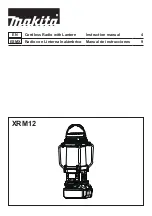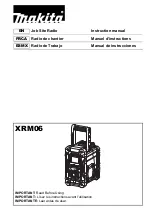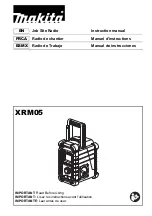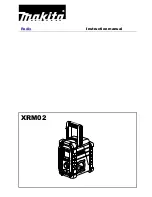
IMPORTANT: READ THIS INFORMATION BEFORE
USING YOUR RINO:
Exposure to Radio Frequency Signals
—Your wireless handheld
radio is a low power radio transmitter and receiver. When it is
on, it receives and also sends out radio frequency (RF) signals.
In August 1996, The Federal Communications Commissions
(FCC) adopted RF exposure guidelines with safety levels for
handheld wireless radios. Those guidelines are consistent with
safety standards previously set by both U.S. and international
standards bodies: American National Standards Institute (ANSI)
IEEE. C95.1-1992; National Council on Radiation Protection
and Measurements (NCRP) Report 86; International Commission
on Non-Ionizing Radiation Protection (ICNIRP) 1996. Those
standards were based on comprehensive and periodic evaluations
of the relevant scientific literature. For example, over 130
scientists, engineers, and physicians from universities, government
health agencies, and industry reviewed the available body of
research to develop the ANSI Standard (C95.1). The design of your
radio complies with the FCC guidelines (and those standards).
For body-worn and face-held operation, this radio demonstrates
compliance and meets the FCC RF exposure guidelines for
uncontrolled exposure (general population) when used with
approved accessories supplied with or designed for this product.
Use of other accessories may not ensure compliance with FCC RF
exposure guidelines.
Antenna Care
—Use only the supplied antenna. Unauthorized
antennas, modifications, or attachments could damage the radio
and may violate FCC regulations.
Do not use any radio that has
a damaged antenna, because if it comes into contact with your
skin, a minor burn can result.
Electronic Devices
—Most modern electronic equipment is
shielded from RF signals. However, certain equipment may not be
shielded against the RF signals from your wireless radio.
Pacemakers
—The Health Industry Manufacturers Association
recommends that a minimum separation of six inches (6”) be
maintained between a handheld wireless radio and a pacemaker
to avoid potential interference with the pacemaker. These
recommendations are consistent with the independent research by
and recommendations of Wireless Technology Research. Persons
with pacemakers should ALWAYS keep the radio more than six
inches from their pacemaker when the radio is turned on, should
not carry the radio in a breast pocket, should use the ear opposite
Rino
®
520/530 Owner’s Manual
iii
I
ntroductIon
>
W
arnIngs
and
c
autIons
Summary of Contents for RINO 520 - Hiking GPS Receiver
Page 1: ...owner s manual Rino 520 530 2 way radio GPS ...
Page 130: ......






































